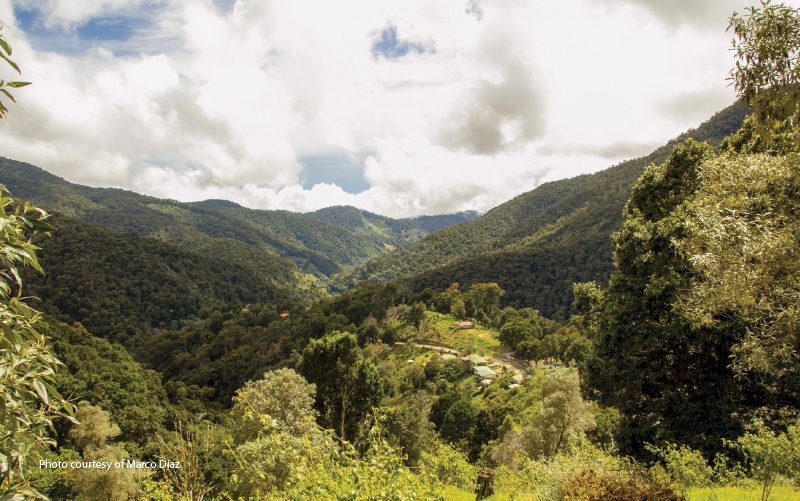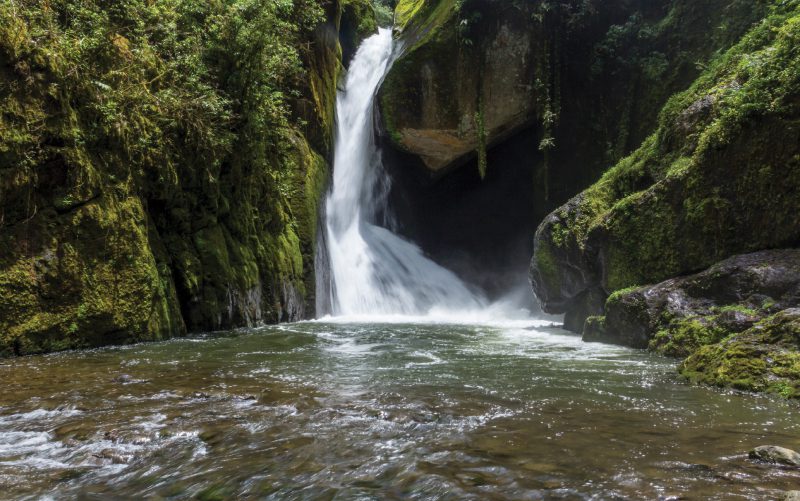Los Quetzales National Park – Costa Rica’s Shangri-La. Shangri-La, the mythical, magical, cloud-shrouded village hidden high in the mountains, was described in the 1933 novel “Lost Horizon” by British author James Hilton. Does a place like this really exist? Perhaps in Costa Rica it does.
The legendary history of two little towns, San Gerardo de Dota and Providencia, nestled high in mountain valleys following streams is shared in our related story, “On the Road to Shambhala.” Separating these two towns is a vast forest spanning more than 5,000 hectares, which in 2006 became the site for Los Quetzales National Park. This park was created to protect the habitat of its prized namesake bird, the resplendent quetzal, but the surprise is really found in its cloud forests and “tropical alpine” attributes.
Scientists opted for the name ‘páramo’ because
the ‘tropical alpine’ designation seemed oxymoronic.
So indeed, Costa Rica has its Shangri-La. This is my personal favorite spot in the entire country, and one of my favorites in the whole world. The national park and Dota region have a beauty and allure like nowhere else in the country. From its access point at the highest elevation of 10,000 feet, close to Cerro de la Muerte, you can drive on a public highway to beautiful, alpine-like villages on either side, plunging down through valleys cut by the Brujo or Savegre Rivers, respectively.
Cool, crisp air and pristine, crystal-clear streams are part of the environment for plants, animals and birds found only at these higher elevations. You are also surrounded by wonderful forests — cloud forests — not as famous as Monteverde’s but just as beautiful. Huge boulders, remnants of erosion and even glaciation, dot the landscape. Kilometers of hiking trails take you deep into the forest, to hidden waterfalls and small glacially made lakes. Bright blue morning skies give way to mist and fog in the afternoon, providing a magical end to each day.
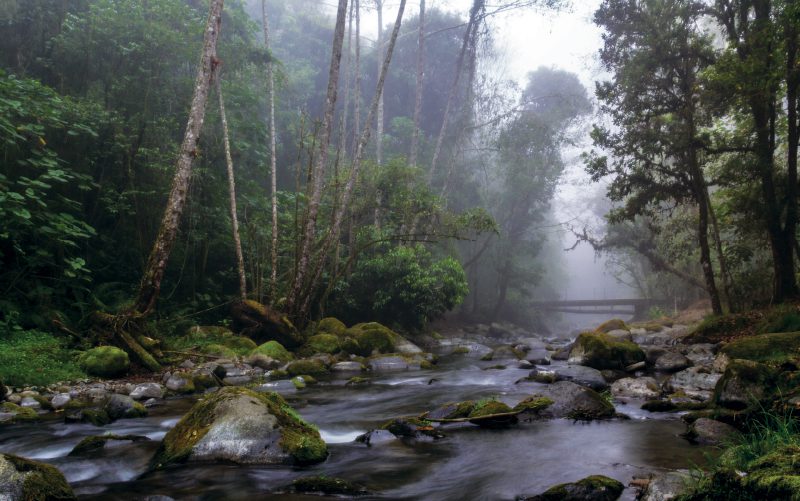
This is a unique alpine ecosystem found only in the intertropical areas from Costa Rica and Panama south to Colombia, Ecuador and Northern Peru. Scientists opted for the name “páramo” because the tropical alpine designation seemed oxymoronic. Low-growing shrubs and mosses, dwarf trees and lichens make for a remarkably beautiful but stark environment for a usually cool walk. Unique, endemic plants, animals and birds inhabit this zone, making it a draw for botanists, and especially birdwatchers. Half of Costa Rica’s endemic birds can be found here.
This area is so special, it’s advisable to break up your visit into three parts: Los Quetzales National Park, then separate visits to Providencia and San Gerardo de Dota.
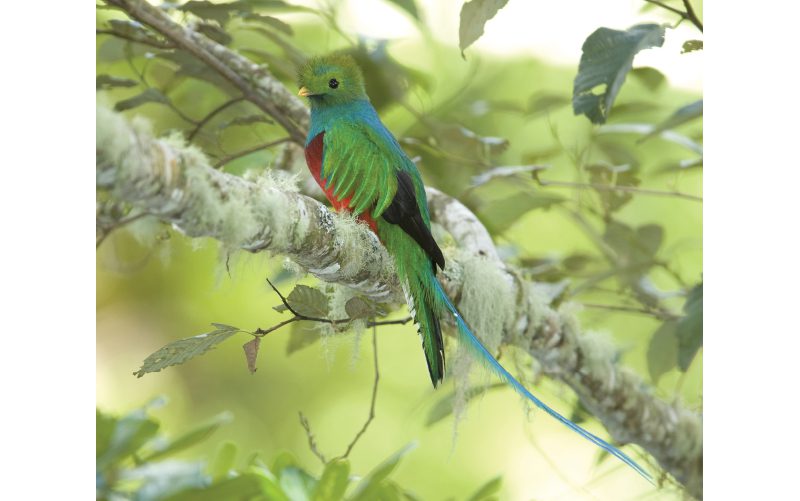
Getting There
From San José, take the South Interamerican Highway to Perez Zeledón, which takes about two hours. From places like Quepos and Dominical in the south, travel north to Perez Zeledón. This also takes around two hours.
At approximately the 76-kilometer point you reach Chespiritos #1 Restaurant, one of the so-called “rest stops/truck stops” from the days when this was the ONLY route north or south. It is on your left if coming from the north, right if from the south.
The national park entrance and headquarters are right across the street.
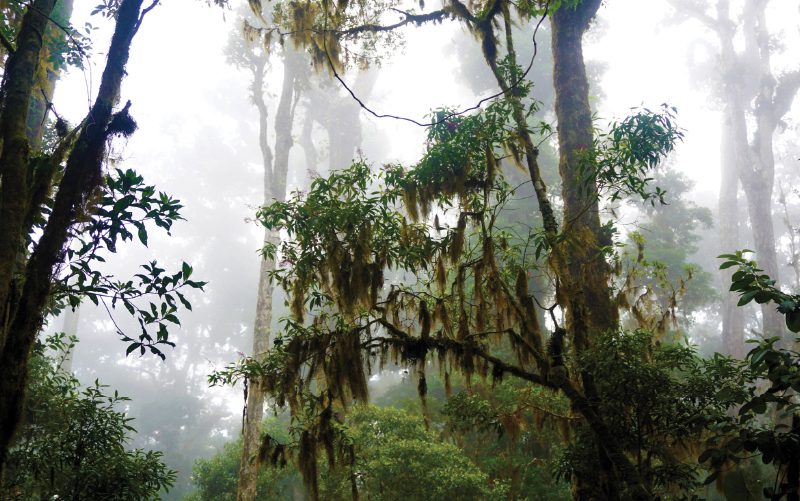
Visiting Los Quetzales National Park
The park headquarters has ample parking space and facilities. If you have not done so already, warm up with a cup of coffee and use the restaurant facilities across the street. Entrance fees (although often not requested) are the same for any national park: 1,500 colones for nationals and $15 for foreigners.
Two park trails exist in the small area accessible to tourists. Take the shorter, 400-meter Circular trail for a less extensive introduction to the area. The longer Ojo de Agua trail is a linear 2-kilometer walk in each direction.
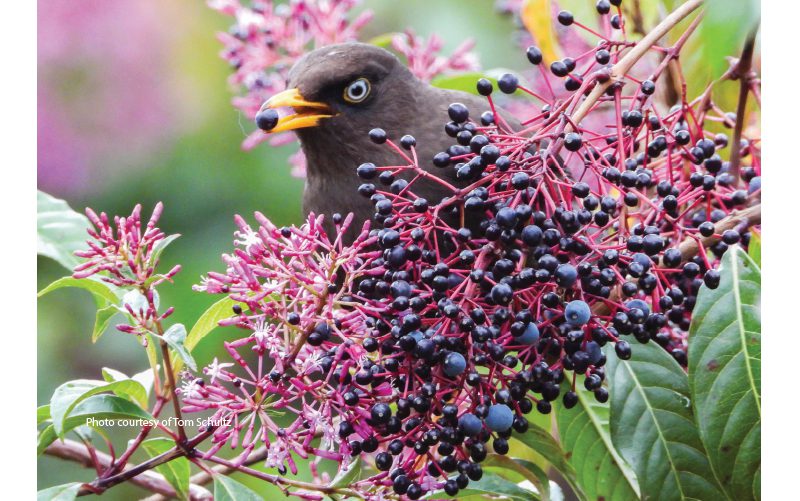
If you can only choose one trail, I recommend walking at least part of the Ojo de Agua route. Starting at 10,000 feet, it goes through the secondary-growth forest as you walk down to the end. More impressively, small sections near the beginning of the trail expose you to the very special páramo ecosystem.
Mornings are the best time to visit the park, even during the dry season, since the clouds and mist roll in like clockwork in the early afternoon. And dress for cool, if not cold, weather. We carried ski caps and gloves during our last visit in December. Bundle up for your hike and enjoy being in a totally different alpine world!
See our related story on Providencia and San Gerardo de Dota here.
Rincon de la Vieja – Things to do
4×4 Lake Arenal – road to El Castillo
Lucky Lovers Leap into an adventure of a lifetime
Lake Arenal – Lost Canyon Adventure
Gone Fishing: worst day fishing beats the best day working
Seven Days in Costa Rica: Arenal, Dominical and More
Lake Arenal: Safari River Float is a slow boat to paradise
Gone Sailing in Guanacaste Costa Rica
Cocos Island, Costa Rica’s treasure
Stand Up Paddle boarding SUP
ATV Tours, Take the road not taken
Deep Sea Fishing, Fun and Flamingo Costa Rica
White water rafting in Costa Rica
Scuba Diving in Costa Rica
Costa Rica Combo Adventure Parks
Authentic Costa Rica: What to do in rural Bijagua
Blue River Resort and Hot Springs
Costa Rican Army Abolished: One more reason for happiness?
Feature Article – Living longer in Costat Rica Blue Zone
Costa Rica Yoga and Wellness Retreats
Yoga Wisdom – Power of Yoga: Yamas and Niyamas
Yogapedia – Vrksasana: Tree Pose
Natural Medicine – CBD Oil: Nature’s Miracle Cure?
Mindfulness: Natural High: Benefits of Nature
Psychological Well Being – Counseling Help in Costa Rica
Eat Well: Costa Rica Superfoods – Nutrient Dense Food
Costa Rica Medical Tourism
Costa Rica Dental Tourism: Veneers – Reason to Smile

